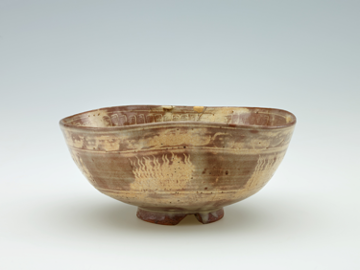time zone will be applied.
Report this post?

This event is open to public.
Displaced from their original context of production and consumption, Korean ceramic tea bowls, called kōrai chawan in Japan, became valuable objects sought out by Japanese military elites, wealthy merchants, and monks. These men participated in sixteenth-century Japanese tea practice, chanoyu, a specialized cultural forum for aesthetic discourse. The appreciation for kōrai chawan marked the beginning of Japanese interest in collecting non-Chinese objects, and this shift had a profound impact on sixteenth-century Japanese aesthetics, as well as both Korean and Japanese artistic production later in the seventeenth century. The early kōrai chawan were Korean ceramics initially made for a domestic market, which were transported to Japan and repurposed in the context of tea practice. However, the seventeenth century gave rise to the production of order-made Korean ceramics to suit the tastes of Japanese collectors. Remarkably, this continued Japanese interest in Korean ceramics persisted despite the disruption caused by the Imjin War (1592-1598). The examination of this seventeenth-century development in Korean ceramic production has been largely limited to the field of Japanese art history, as extant tea bowls mostly survive in Japanese collections. This presentation examines how order-made Korean tea bowls speak to the transcultural impact of Chosŏn Dynasty (1392-1910) art in the early modern period.
About the Presenter
Sol Jung is the Shirley Z. Johnson Assistant Curator of Japanese Art at the Smithsonian Institution’s National Museum of Asian Art, where she oversees the museum’s collection of premodern to contemporary Japanese ceramics, lacquerware, metalwork, and tea-related objects. Jung specializes in Japanese art history with a focus on how transnational maritime trade impacted Japan’s visual culture during the premodern period. Jung received her B.A. with distinction in History of Art at the University of Pennsylvania, and her M.A. in Art and Archaeology from Princeton University. Jung curated Princeton University Art Museum’s first thematic exhibition of Korean ceramics entitled Korean Ceramics: From Archaeology to Art History. She has examined the reception of Korean tea bowls, called kōrai chawan in Japan, during the sixteenth century. Fieldwork at several Japanese maritime settlement sites, and analysis of period tea documents, literary texts, and archaeological remains from Korea and Japan have informed her research, which has been supported by the Metropolitan Center for Far Eastern Art Studies and the Kyujanggak International Center for Korean Studies.
Choson History Society
Twitter / X: https://twitter.com/ChosonHistory
YouTube: https://www.youtube.com/channel/UCndwc2pAmXCWUDx1DSsf6_Q
Facebook: https://m.facebook.com/profile.php?id=100091544423955
Instagram: https://instagram.com/chosonhistorysociety?igshid=YmMyMTA2M2Y=